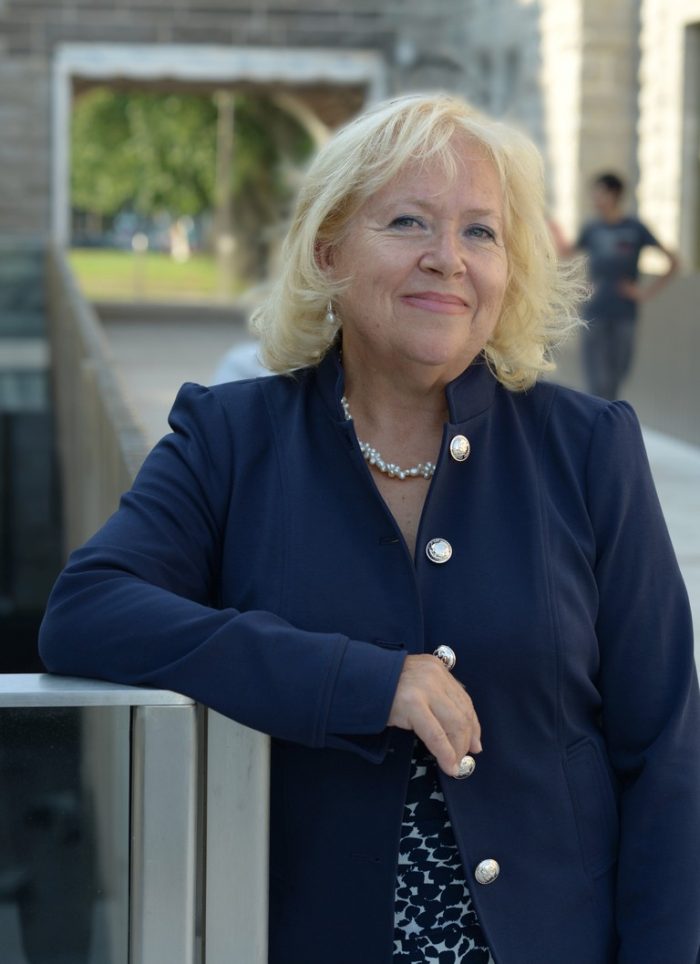
Marie-Andrée Doran
It all began in December 2015. Just before Christmas at Université Laval we hosted a delegation from Université Nice Sophia Antipolis (UNS), which eventually became Université Côté d’Azur (UCA). Frédérique Vidal, the current Minister of Higher Education, Research and Innovation and former president of UNS and her colleagues had identified our university as a leader in distance learning, for our summer school, and in the transition to digital. I was at that first meeting. Because I was involved in developing international partnerships, I was asked to head up this strategic partnership, to help UL and UCA become “sister universities.” This type of partnership is very intense, both in terms of education and research. I was chosen for the job because I had very broad and varied experience in university governance and management in a range of fields at Université Laval, both on the academic side (department head, institute head, faculty secretary, director of the International Mobility Consortium, etc.) and on the administrative side (assistant to vice-rectors in different offices, faculty executive director, etc.), and am known as a builder. My in-depth knowledge of our university ecosystem makes it easier to establish links and develop projects. And in an era where the digitization of society is accelerating, my specialized expertise in the field is very useful for partnership development.
Erwan Paitel, my counterpart at UCA, has become one of my top working partners and a friend. He is intelligent, forward-thinking, and effective. He is also a people person. Erwan is able to go out and convince people, and he sees opportunities the way I do. Professionally, we are on the same page. We can get things done quickly because he is close to his education and research ecosystem and I am very familiar with ours. We have established innovative digital tools that allow our teams to monitor the development of the partnership and track its very tangible results.
In my opinion, the keys to success for an ambitious partnership like this one are the links between the administrations of the two universities and between those responsible for its implementation. It takes good chemistry to get this kind of project off the ground. There are certainly challenges involved in working with someone remotely, but it has been a wonderful adventure that has enhanced our individual working methods. Teams of UL-UCA researchers are currently working together on projects involving our communities on smart cities and Territoires d’Innovation – Grande Ambition (TIGA), artificial intelligence, and five joint Sentinel North-IDEX UCA Jedi projects. In education, three joint Educational Leadership Chairs have been created. We are also looking to step up our joint educational offer in several areas. As long as our teachers and researchers are committed and there are joint education and research projects, there are enough close ties to consider Université Côte d’Azur as a strategic partner with which we can maximize our development.
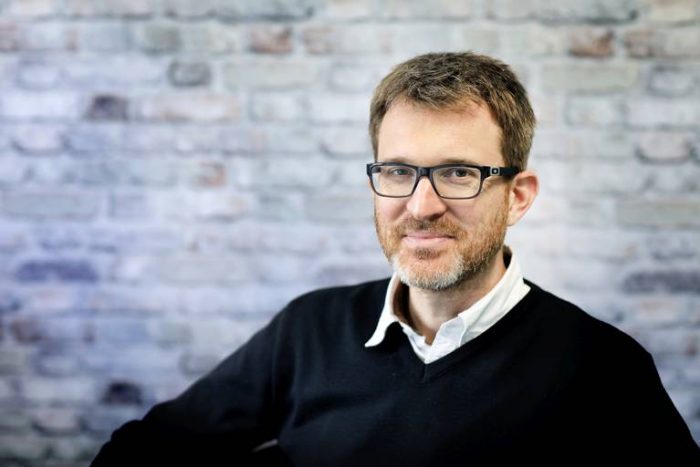
Erwan Paitel
I became interested in Université Laval, which had been identified as a reference university by UCA administration, because of a request from Frédérique Vidal, who was the director of the IDEX UCA Jedi education program and is now the Minister of Higher Education, Research and Innovation. The president’s team was interested in Université Laval because it had over 1,000 distance courses. The team was exploring distance education for the IDEX program, for which I was head of operations. In May 2016, I had a very fruitful meeting with Nicole Lacasse and Marie-Andrée Doran at a conference in Poitiers on education in the French-speaking world. We organized an initial Université Côte d’Azur delegation, which visited Université Laval in late 2016. It was a resounding success because, in addition to distance learning, we identified strong synergies between our universities in terms of research priorities, governance, and our approaches to education, international relations, and so on. It became clear that we would establish a strategic partnership.
The first step was to set up joint Educational Leadership Chairs (ELCs), which were developed by Université Laval to support teaching. We created the first joint UL-UCA projects for teacher-researchers through these ELCs. The first ELC involved our respective faculties of medicine and focused on health education through medical simulation. It was established in early February 2017 with a four-person working committee that has since met and collaborated on a regular basis.
Seven more delegations have followed, resulting in three ELCs and six UL-UCA research partnerships, five of which are joint Sentinel North and IDEX UCA Jedi projects. Today UCA researchers are visiting Université Laval and Université Laval researchers are coming to UCA. It’s fantastic—every month I hear about someone else who has gone to UL or come to UCA. We are working on joint educational programs such as the MSc Smart Ed Tech program, and our institutions are citing the partnership as an asset in tender applications.
Marie-Andrée and I instigated the partnership, and over time we have forged a strong professional bond that is friendly and almost familial. But now we are making sure the partnership extends beyond us. It must grow while preserving our institutions’ resources. We are most satisfied by the fact that it is working, and we hope that links are forged beyond the primary stakeholders—between cities and companies, for example.
The partnership occupies a significant part of my professional and personal life. It’s an international experience that has really opened my eyes. It has been enriching on a professional level, and through it I have made lasting friendships.
We could speculate about the partnership’s longevity, but Université Côte d’Azur’s strategy is to establish strong links with a small network of universities around the world.
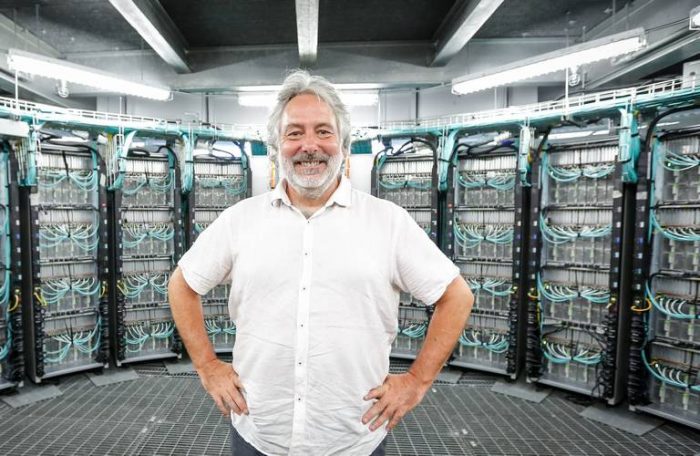
François Laviolette
I came late to artificial intelligence, as I was more interested in problems related to the foundations of mathematics. I was trained as a mathematician—I have a master’s degree in logic and a PhD in graph theory. For various reasons, I was invited to join the Université Laval Computer Science Department as a researcher and professor in 2002. I started to use my mathematical skills and assess the applied fields where I could contribute. Artificial intelligence involves complex and fascinating mathematical problems and the ability to solve problems facing society. That really appealed to me.
Charles Bouveyron has developed artificial intelligence methods that are very different from mine. We will really compliment one another in projects like PULSAR and the Medical Data Lab, and we will probably be able to go further as a team. The data we have collected is very diverse, so we will need data analysis experts, and articifical intelligence experts in particular, to make sure that researchers can understand what’s going on in this complex ecosystem. It will also be interesting to see if we can make artificial intelligence more comprehensible or interpretable by combining our two approaches with a view to making it as responsible as possible.
We have large artificial intelligence research teams working with us. The Université Laval Big Data Research Centre has 50 researchers, about a third of whom are working on health-related problems. That’s a lot of data analysis firepower, and I think it will play a key role in our joint Medical Data Lab and PULSAR journey. PULSAR could not get off the ground without contributions from data analysis experts, because they will be able to support all the other disciplines involved in the project. We already know how to use some well-known data analysis methods because the algorithms exist, but we are expecting to develop new algorithms or adapt existing ones for certain types of data in order to get valuable information into the hands of our partners.
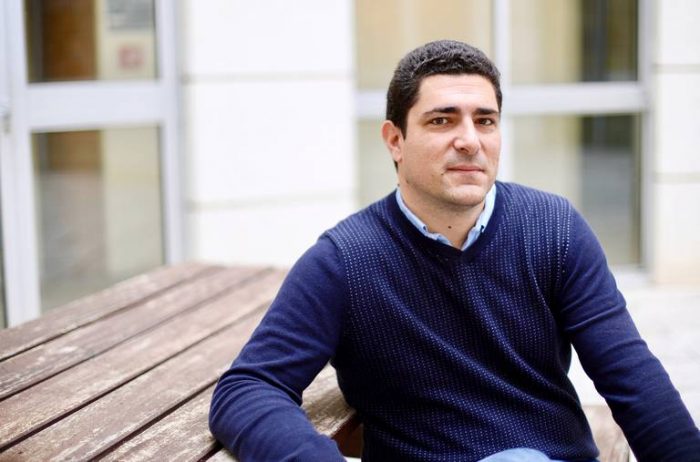
Charles Bouveyron
I have always been interested in mathematics and computer science. I would even say that I had a hard time choosing between the two. I went into mathematics and when I had the opportunity to do a thesis at Inria on applied statistics for imaging, I took advantage of it. When I chose my thesis topic, image applications and image recognition were in their infancy. As a postdoc I broadened my research to include other types of data related to communication networks. Each time I chose cutting-edge research areas that needed a lot of work and carried out high-impact projects.
In the end you might say I was lucky to come across applied subjects for which I could use my expertise as a theoretician to develop solutions. I also created opportunities on a number of occasions by seeking out colleagues in other disciplines, especially the humanities and social sciences. For example, Linkage—a tool for analyzing large communication networks (linkage.fr)—was born out of discussions with a medieval historian who wanted to analyze a 15-century-old social network of clergymen! Using archival sources (minutes from clergy meetings), we were able to analyze the network, initially without taking into account what was being said, but by analyzing who was talking to whom. Not using all the text contained in the minutes was a real shame, so we spent three or four years developing a method for analyzing that kind of communication network. With Linkage you can identify groups of people who communicate in the same way about the same subjects. The Ministry of Higher Education, Research and Innovation is interested in Linkage for research management. It would enable the Ministry to highlight interactions between researchers, their research topics, and even identify emerging areas of research.
I am currently developing applications in medicine and health care that address significant public health issues. I come from a family of doctors, so it’s area I care about deeply. It will be the focus of my collaboration with Université Laval. Université Laval has a massive data research centre that will compliment our Medical Data Lab. Data exchange in medicine is always tricky because of legal restrictions. That is actually an interesting subject for statistical research: how could we teach an algorithm to detect a pathology based on data from a number of institutions without breaking confidentiality laws?
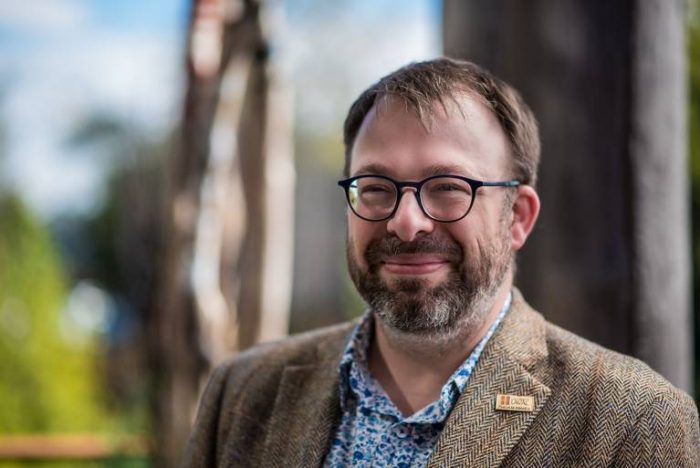
Mathieu Leboeuf
I have developed a close friendship with the Educational Leadership Chair in Women’s Health team. I am an obstetrician/gynecologist, and co-chair Geneviève Nadeau is an urologist with a subspecialty in urogynecology. Two professors from Université Côte d’Azur are also involved: Dr. Jérôme Delotte is a gynecologist, and Dr. Christian Pradier specializes in public health and has always been very interested in women’s health at the population level. Together, we are an excellent vehicle for generating ideas. Our experiences vary, but we share a common interest, so we all have different ways of approaching problems. It’s fantastic and spawns new ideas.
Professionally, the European perspective will provide interesting insight into our North American way of thinking. One of the topics we have found very compelling is the collaboration between midwives and obstetricians in France. There, midwives do all deliveries and checkups. Obstetricians only step in when there are complications. In Québec, on the other hand, physicians and midwives form two parallel healthcare models. I think the French model is very appealing, even though it is not yet realistic here. One of our tasks will be to supervise the theses of physicians and midwives in France, and we will also facilitate discussion between midwives and physicians in Québec.
In addition to holding an interuniversity conference on women’s health during the chair’s tenure, we are looking to launch a MOOC in 2019 or 2020. Our aim is to develop a massive open online course on women’s health. We are conducting a study of educational needs with patients and the nurses and doctors we work with. We also want to fill educational gaps in terms of treating female bladder conditions, including bladder prolapse. It is very difficult to teach, and we are developing a pelvic model made from polymer for surgical simulation for students and physicians. We are considering the use of 3D printers to make the models easier and cheaper to produce. We could even disseminate the model so anyone in the world could 3D print it and use it in their practice. That’s one of our ideas, but we’ll need to talk to engineers. It could even be a project for an engineering student. At an institution like Université Laval, there is an expert in just about every field—you just have to find them.
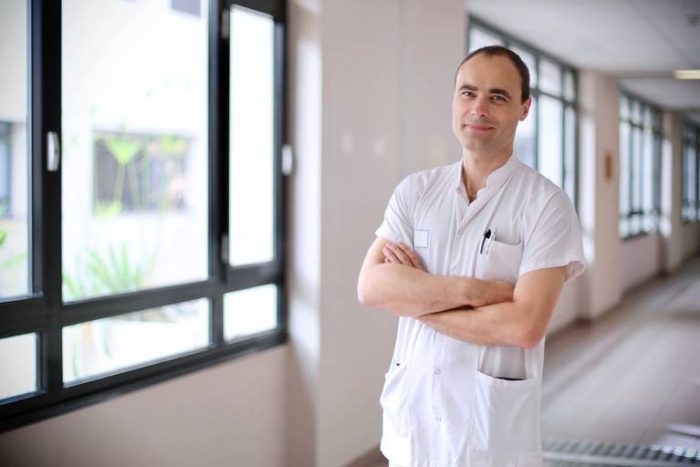
Jérôme Delotte
My desire to become a gynecologist/obstetrician started during medical school. We had to do rotations in a number of different specialties, and gynecology was mandatory at the time. I discovered an incredibly broad discipline that encompasses medicine, surgery, imaging, the fight against cancer, and obstetrics. It’s extremely wide-ranging and fascinating. So I told myself that I would do my best to become a gynecologist. Luckily I made it through all the competitions and exams. I often joke with my students that there are two kinds of people in the world: those who are gynecologists, and those who wish they were!
Practising at a public hospital is very important to me. I need to work in a setting where I can uphold my values—specifically access to care for any woman who walks through the hospital doors, whether or not she is a resident of Côte d’Azur. For example, our department cares for many immigrant women.
My concern with women’s healthcare more generally developed over time. I realized that a broader vision of care requires managing pathologies and a more socially oriented approach. In terms of violence against women, for example, my job as a gynecologist is not just to take samples. You have to try to counter the problem. We set up a counselling service at Hôpital de l’Archet at CHU de Nice to curb violence against women and help women in need. Apart from violence against women, men and women don’t receive equal care and treatment. Some diseases are diagnosed more quickly for men than women and treated sooner! The way clinical cases are presented to students can influence overall behaviour in the medical profession and create persistent inequalities. That is unacceptable, so we have to continue current efforts to raise collective awareness.
Thanks to the Educational Leadership Chair that we set up a year ago with Dr. Leboeuf, Dr. Nadeau, and Dr. Pradier, we have already had a lot of back and forth about the role of women’s healthcare in society and compared the situations in France and Canada. UL’s experience and our discussions have helped us improve sexual health courses at the Faculty of Medicine in Nice. Students will be trained on how to intervene in schools and provide information that will have a long-term impact. Other projects regarding the French-speaking world are in the works, and the dialogue between our two universities has really helped us develop new projects.
Christian Pradier, a professor in public health at the Faculty of Medicine in Nice, has been deeply involved in this chair, helping us develop assessment tools and research protocols that are valid in terms of public health. His public health approach to pathology and social movements goes hand in hand with what we are trying to accomplish. The chair is really exciting because it can encompass all sorts of approaches. It’s based on teaching, and the underlying idea is transmission, because the more you scratch the surface, the more you find gender inequalities. We have to get organized and share information in order to make changes.
In addition to care for cardiovascular pathologies and incontinence, obstetrical improvements, the fight against genital mutilation, and so on, the chair provides an opportunity for international reflection on health, equality, and women’s role in society.
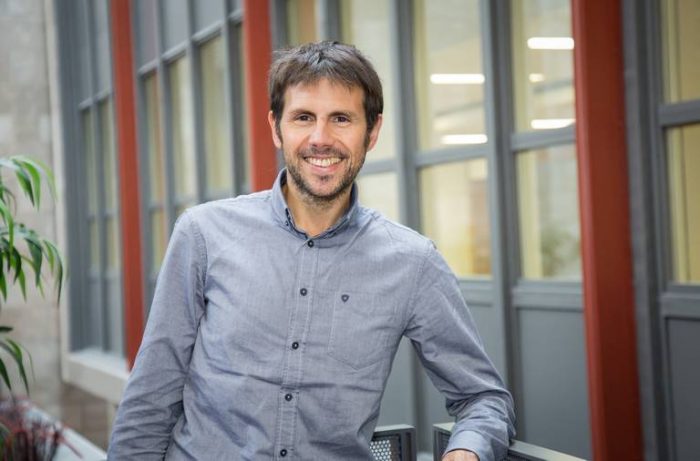
Arnaud Droit
As part of my involvement in the L’Oréal Research and Innovation Chair in Digital Biology, I participated in an institutional mission to Nice to develop the partnership between Université Laval and Université Côte d’Azur. It’s funny because there were a lot of formal presentations on very interesting topics, but there was a researcher from Université Côte d’Azur sitting next to me who wasn’t presenting. In talking, we realized that we shared common ground and had compatible approaches. We continued our discussion a few days after I returned to Québec City with a view to collaborating.
Guillaume Sandoz works on changing mutations of the microbiome. I am a bioinformatician with an interest in microbiomics. Together, we developed a project to study mutations in microbiome development that we submitted to Sentinel North. Microbiome analysis has significant implications and is extremely challenging in terms of data analysis. It’s not easy to understand and analyze a person’s or place’s microbiome—it requires advanced computer skills.
We are looking to understand the intestine, a complex organ filled with germs and their myriad interrelations, so I think the benefits of the project will be quite significant. We now know that microbiomes are linked to the development and onset of certain symptoms that indicate diseases. We can envision a time when we will be able to tell if a particular mutation will lead to a specific change in the composition of your microbiome.
Our collaboration is going very well, and we recently received funding from our respective universities. We meet by videoconference every two weeks and are looking at opportunities for student exchanges. I would like to send one of my students to Nice, and one of Guillaume’s students could come spend time here at Université Laval to foster the transfer of knowledge and skills. I’m very pleased. It’s a great initiative.
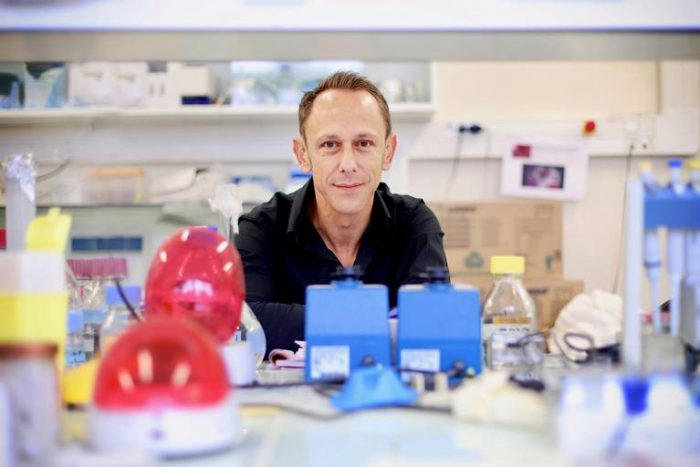
Guillaume Sandoz
People say I’m a biology geek. When I was an undergraduate student in biology, I was obsessed with electrophysiology because I loved math and had excellent biophysics professors who taught us the basics of measuring current. What’s so great about these techniques is that when there’s only one channel under the pipette, only the activity of that channel (i.e., a single molecule) is measured. We also developed and used single molecule microscopy techniques that allowed us to see these channels at the unit level without any image processing. Today, in addition to my career in biology, I still love technology. Recently my team and I have been working in partnership with Stéphane Berland’s team at Institut de Physique de Nice and Sylvain Antoniotti’s team at Institut de Chimie de Nice to develop a laser system to control protein activity with spatial and temporal resolution.
My team is working on ion channels, which generate electrical signals (i.e., current) that allow the nervous system to perceive the world, integrate information, create memories, and control behaviour. They play an important role in mood regulation, pain control, and cognitive impairment. Hormones and neurotransmitters regulate ion channels directly or indirectly via specialized receptors. Our work on these channels and their role in migraine recently led to the discovery of a new mechanism for the transmission of hereditary diseases. We are currently trying to determine if it can be applied to other genes and diseases.
Arnaud Droit from Université Laval and I hit it off right away because we have mutual friend in Eric Boilard, who is also a biology professor at Université Laval. Thanks to this partnership, we will be able to use Université Laval’s bioinformatics databases to study genome variations and determine whether this newly discovered mechanism applies to other genes and diseases.

News
Share news about your projects
Use #ULavalUCotedAzur


